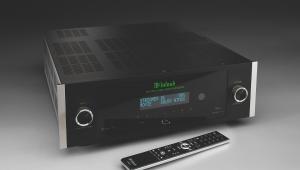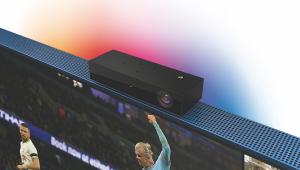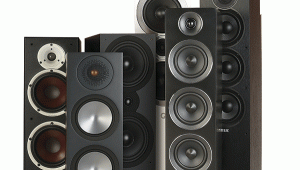Point of View: Fear of the future

The end of the world (of home cinema) is nigh. I have seen the omens and portents, and the shape of the beast is that of a toaster. To be precise, it’s a toaster that carries a database of bread products and, buoyed with a knowledge of all things baked, will serve up perfectly browned toasted products whether you pop-in a frozen bagel or a slice of Hovis. And it’s networked to ensure an up-to-date repository of bready knowledge, and to keep its firmware at the cutting edge of, er, toasting technology.
Remember the episode of Red Dwarf where Talkie Toaster almost killed the crew? That wasn’t fiction, that was a premonition.
Flood of firmwareProcessor-based electronic architecture, as opposed to the largescale integrated circuit, has underpinned almost every key development in consumer electronic goods over the last 10 years. Blu-ray players to TVs, personal audio players to smartphones, they all owe their existence to the holy trinity of a processor chip, firmware and software. Network these devices and they can be updated, upgraded and even fixed by firmware and software patches. These gadgets are so complex that mistakes and ‘bugs’ are inevitable, making the ability to update firmware an essential ingredient in today’s high street hardware. So why not extend the benefit to other complex systems? Despite the lack of enthusiasm for the rash of internet fridges launched a few years back, domestic appliances and small kitchen gizmos will be the next household items to commonly use a core processor with updateable firmware.
And that’s when it’s all going to implode. Right here, right now, I have more than 20 networked CE products at home and their thirst for updates seems insatiable. It has already got to the point where I need to give my home cinema system a half-hour’s notice to watch a movie. Every time I power it up, the BD spinner, AV processor, TV, server, Freesat box and iPad all need to download new firmware. By the time we are ready to dim the lights (assuming the Lutron controller doesn’t fancy an update) the popcorn is stone cold.
It came to a head last month when the missus and I returned from a holiday. We planned to top off a relaxing week with a bottle of something red and a good movie. We didn’t manage it. The combined software updates required after leaving the system switched off for seven days wiped out the entire evening. If the current crop of kit I own is anything to go by, firmware updates are getting ever bigger and ever more regular.
Now then, fast-forward a few years to a time when every single electronic or electrical device in your home uses processor/firmware architecture. Networked fridges and washing machines are already available, small domestic appliances with Wi-Fi and a desire for knowledge are on the way. But if I ever have to wait five minutes for a firmware update before my kettle boils water I am going to go seriously postal.
No one seems in much of a hurry to drastically improve rural broadband speeds, leaving people outside of major conurbations on the verge of electronic meltdown. And what would you get when this combined demand for firmware data exceeded the maximum capacity of your broadband connection? A critical impasse, where all your devices would go into firmware update mode, but not actually get the data quickly enough to achieve the patch before the next update was available, thus tipping every electronic or electrical device in your home into silent, permanent, cataclysmic oblivion.
Mark my words – Talkie Toaster really will cause the end of the world...
Is all your AV hardware connected to the internet?
Let us know via [email protected] or log-on and comment below
This column first appeared in the September 2012 issue of Home Cinema Choice
 |
Home Cinema Choice #351 is on sale now, featuring: Samsung S95D flagship OLED TV; Ascendo loudspeakers; Pioneer VSA-LX805 AV receiver; UST projector roundup; 2024’s summer movies; Conan 4K; and more
|






















































